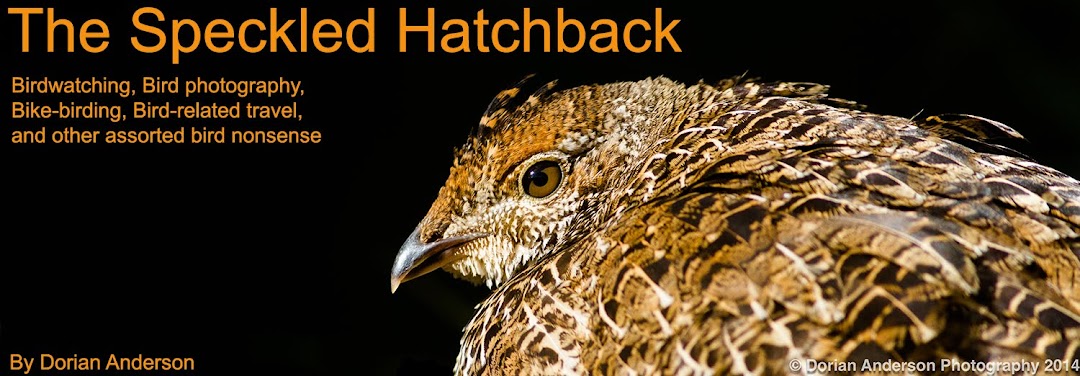Brown Pelican to set the stage!
I photographed this bird in La Jolla, CA a few years back
In transiting in and out of Pillar Point Harbor on my many recent pelagic trips, I've trying to find and photograph as many banded Brown Pelicans as possible. It's a fun little game, and I usually find between 4 and 6 birds on our slow exit from the harbor as we head out to sea. Alvaro Jaramillo put me in contact with some folks at International Bird Rescue, and I've since been submitting my sightings through the appropriate channels. It turns out that I've photographed pelicans that have been banded by a number of different agencies under a bunch of different circumstances. I am going to share this banding information with you so that you two can report a banded pelicans if you are lucky enough to find one.
Examples of banded Brown Pelicans that I
photographed in Pillar Point Harbor on Sept 14, 2017.
Case histories of some of these are below.
BLUE BANDS: International Bird Rescue places blue bands with with white letters on Brown Pelicans that have been rehabilitated and released from either their San Francisco or Los Angeles centers. The H and M series are several years old; The N series is more current. To report a blue banded pelican, click here. For some more general information on the project, please look here.
GREEN Z BANDS: These bands (also with white lettering) are used by Oiled Wildlife Care Network, and 46 of them were placed individual Brown Pelicans that were oiled (as a result of a crude oil pipeline leak) near Refugio State Beach in Santa Barbara in the spring of 2015. To report a green banded pelican, click here.
WHITE BANDS: White bands with black lettering are used by The Wildlife Center of the North Coast (WCNC) rehabilitation facility in Astoria, Oregon. In collaboration with the Pacific Eco Log (PEL) and the United States Geological Survey (USGS). In 2009, those agencies jointly initiated a banding project to band pelicans on the Oregon Coast. To report a white banded pelican, click here.
RED BANDS: These bands were placed on chicks that hatched in Mexico in the last few years. I am still gathering all relevant information to report these to the appropriate agency, so please check back if you find one of these!
Looking at the photo above, I've submitted reports for 5 of the 6 birds, the red-banded bird being the only exception. So far, I've heard back about the three blue-banded birds and the single white-banded individual. Reports for the blue-banded birds are as follows:
H24: Juvenile, male Brown Pelican. Rescued on 06/04/2011 from Half Moon Bay, CA. Stabilized at Peninsula Humane Society (San Mateo, CA) until transfer to International Bird Rescue's SF Bay Center in Fairfield, CA on 06/05/2011 to continue care. Treated for anemia, emaciation, scabs on the bill and cactus thorns embedded in the feet. Released on 06/24/2011 at Alameda, CA. Sightings: 09/28/2013 at Half Moon Bay, CA; 10/02/2013 at Elkhorn Slough, CA; 07/24/2017, 9/14/2017 (photo indicates missing metal band) at Pillar Point, CA.
M43: Adult, male Brown Pelican. Rescued on 02/18/2012 from Santa Cruz, CA. Stabilized at Native Animal Rescue of Santa Cruz until transfer to International Bird Rescue's SF Bay Center in Fairfield, CA on 02/21/2012 to continue care. Treated for a chest wound consistent with a bite from a California Sea Lion and a toe injury. Released on 03/03/2012 at Santa Cruz, CA. Sightings: 04/20/2012 (Unspecified location); 06/13/2013, 01/01/2015, 01/01/2015 at Santa Cruz, CA; 09/10/2015 at Pillar Point, CA; 12/20/2015, 01/15/2016 at Santa Cruz, CA; 05/08/2016, 07/05/2016, 07/27/2016, 07/28/2016, 08/01/2016 at Pillar Point, CA; 08/06/201 at Half Moon Bay, CA; 08/20/2016 at Pillar Point, CA; 11/13/2016 at Elkhorn Slough; 9/14/2017 at Pillar Point, CA.
N66: Adult, female Brown Pelican. Rescued on 5/20/2017 from Redondo Beach, CA by animal control and immediately transported to International Bird Rescue's LA Wildlife Center on 5/20/2017 to continue care. Treated for emaciation, leg abrasions, anemia and hypothermia. Released on 7/7/2017 at White Point Beach in San Pedro, CA. Sightings: 8/22/2017, 9/14/2017 at Pillar Point, CA.
As for the white-banded bird, I was super stoked and felt like a total badass when I received this certificate for my report. I know you have no life when this is the most exciting thing that happened to me this week.
So, there it is. We now know a least a bird more about a few of the banded pelicans. Beyond knowing, it's a good feeling to contribute to these ongoing research projects. Data in such studies can be very difficult to obtain, so I am sure that any and all reports are greatly appreciated by the respective researchers and agencies. Also, as leg bands will in the future almost certainly be replaced by more advanced electronic tagging methods, it's fun to try to find bands before they become an obsolete tracking method. That's it for now. Now get out there a find a few banded birds of your own!














